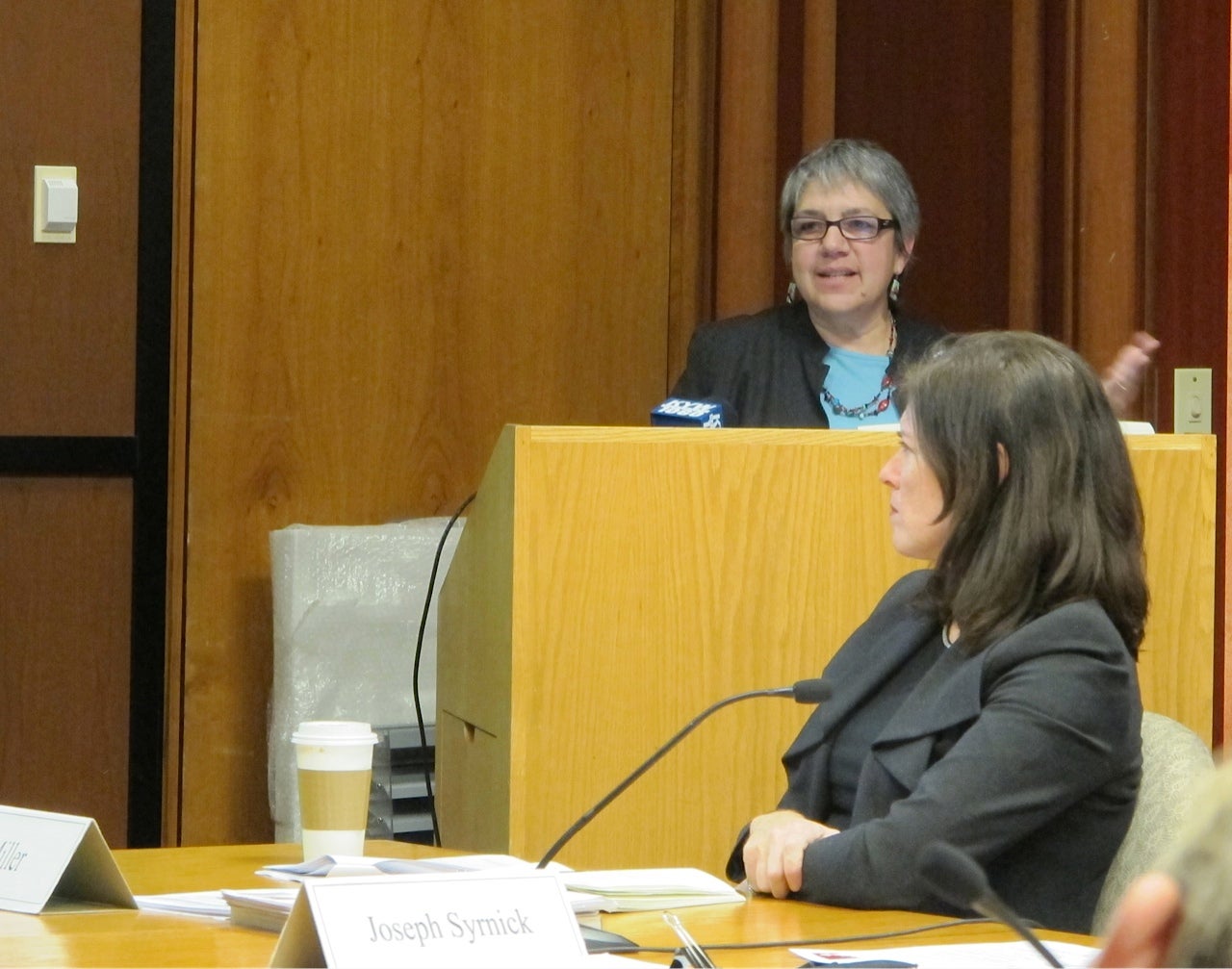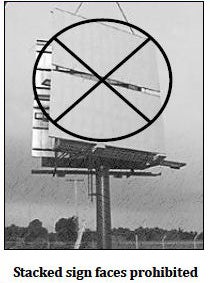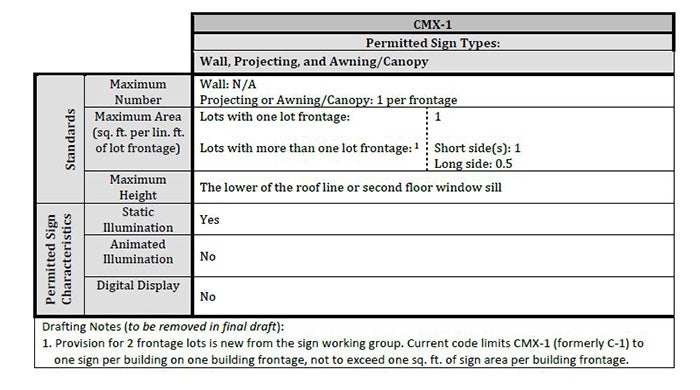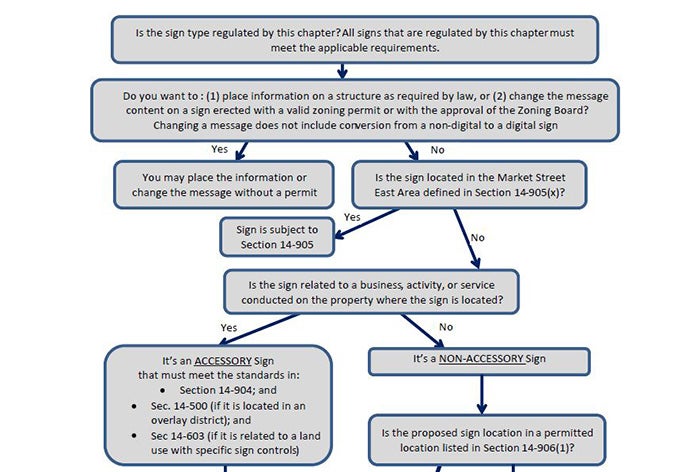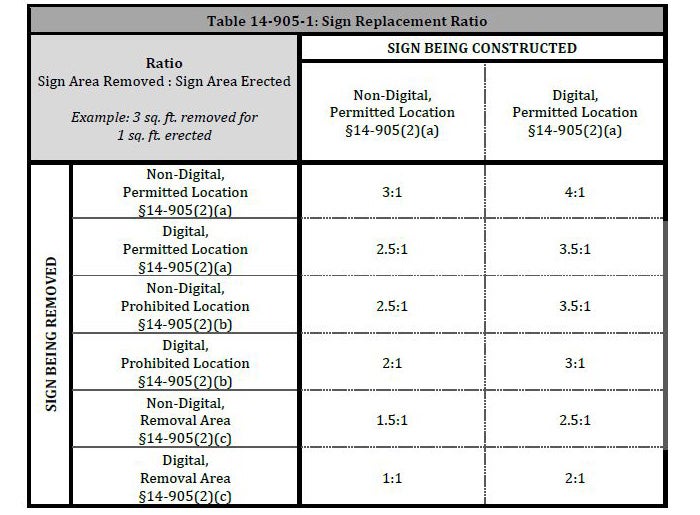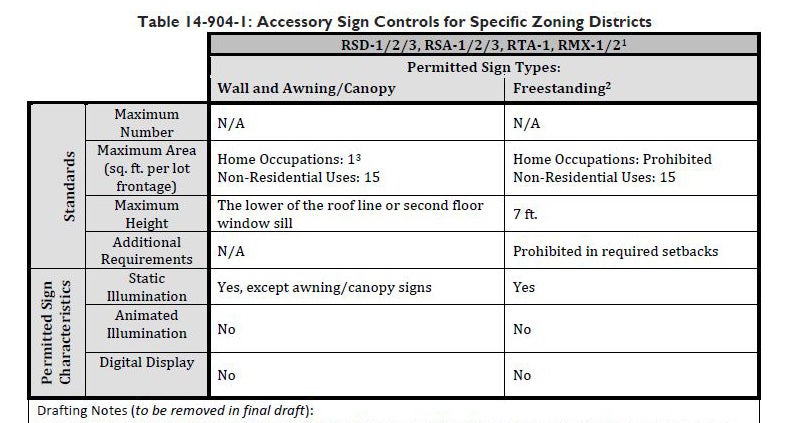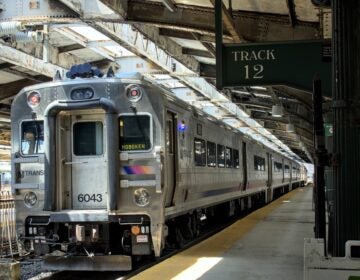Planning Commission group proposes new sign regulations
The new zoning code for the City of Philadelphia took one step closer to completion Tuesday afternoon, when the Sign Control Working Group, a committee of the former Zoning Code Commission, released a draft chapter of revised sign regulations. The proposed new controls were presented to the City Planning Commission by former ZCC director Eva Gladstein.
The group plans to solicit, compile, and publish public comments on the draft and issue a second draft on April 17th. It plans to send a final draft to City Council in May to be inserted into the new zoning code before it takes effect in August.
“Our goal is to get [the sign chapter] into City Council in enough time so they can review it, and, if they so choose, adopt it,” Gladstein told the Planning Commission.
Tuesday’s presentation by Gladstein, who is now deputy director of the Planning Commission, was in part an explanation of the contents of the new chapter, and in part a report on findings from the working group’s first round of civic engagement. On Friday, the group held the last in a series of five “facilitated discussions” with different constituencies aimed at soliciting input on sign controls.
The document released Tuesday by the working group contains a wholly rewritten Chapter 9 (Signs) of the Zoning Code, plus accompanying amendments to chapters 2 (Definitions), 4 (Base Zoning Districts), and 5 (Overlay Zoning Districts).
Gladstein explained that the first intent of the sign control reform was similar to that of the larger zoning reform effort: to create clear and predictable regulations. To that end, the draft chapter takes a number of important steps.
As in the current code, all signs fall into two main categories. There are accessory signs, bearing information about the building or business to which they’re affixed, and non-accessory signs, which don’t advertise anything related to their immediate location. The most obvious example of a non-accessory sign is a billboard.
Among the biggest changes from the current regulations to the proposed new ones is the separation and simplification of Accessory Sign types and characteristics.
The draft chapter identifies seven sign types: Flat Wall, Projecting, Awning/Canopy, Marquee, Roof, Freestanding, and Temporary. It also names seven sign characteristics: Area, Height, Extension, Number, Illumination (Static and Animated), Mechanical Movement, and Digital Display.
A problem with the current sign regulations is that, in some cases, sign types carry a certain definition in one part of the code and a conflicting definition in another part. On a very basic level, the mere compression of the sign regulations into a single chapter is a major improvement over the current code. That sign types and characteristics are limited to just over a dozen definitions makes the rules that much clearer.
The new chapter also contains, like the rest of the reformed zoning code, a number of charts and tables which allow code users to quickly find and digest applicable regulations. For example, a handy “Sign Regulation Applicability Decision Tree” guides users through a series of Yes/No questions designed to let them know when they need to get a zoning permit to hang a certain type of sign.
“We’re trying to drop as much information as we can in table format,” Gladstein said.
The question of how much signage can be placed on different storefronts was central to each of the working group’s first five civic engagement meetings. And, as Gladstein explained at Tuesday’s meeting, participants’ opinions on the right amount of signage did not resolve themselves into a neat consensus. She pointed out, as PlanPhilly previously reported, that participants tended to want to avoid visual clutter, but didn’t agree on what constitutes clutter.
The amount of signage permitted on a building edifice differs in each zoning district, but in most cases, it is calculated the same way. Buildings are allowed a certain number of square feet of signage per linear foot of storefront.
In a CMX-1 district, for example, a building may have 1 square foot of sign per linear foot of street frontage. If that building is on a corner, the shorter side of the building keeps the 1-to-1 sign-area-to-street-frontage ratio, but the longer side gets only half a square foot of signage per linear foot of street frontage. In CMX-2 and CMX-2.5 districts, buildings are permitted three square feet of sign area per linear foot of street frontage. If the building is on a corner, the shorter side gets three square feet and the longer side gets two.
The code stipulates that sign area for a multi-fronted building cannot be combined onto one side. It also says that temporary signs and signs required by law will count toward the total permitted sign area on a given building.
A large corner store in a CMX-2 district with 40 feet of street frontage on one side and 20 feet on the other side would be allowed to hang a total of 140 square feet of signage—80 feet on the long side and 60 feet on the short side.
And so on.
“In general,” Gladstein told the Planning Commission, “we have depressed the amount of permitted sign area.”
One question raised by participants in the working group’s discussions was whether advertisements placed inside stores, but facing outward, would be considered signs. The draft chapter answers that question in the affirmative. Any sign “placed within 18 in. of a street-facing window or door in a manner so that the sign message is visible from the outside of the building” is considered a window sign. (Window signs are treated the same as wall signs.)
Though the draft chapter identifies a category for Mechanical Movement signs—or signs that spin or move on their own, such as the revolving guitar that hangs above the door to the Hard Rock Café at 12th and Market streets—it prohibits those signs in all zoning districts.
Some members of the Planning Commission asked after Gladstein’s presentation what would happen to certain iconic signs—such as the Hard Rock Café guitar, or the PSFS sign—that don’t fit the regulations of the new sign chapter. Gladstein assured them that any sign that legally exists today will be considered an existing non-conformity, and will be allowed to remain.
Gladstein’s presentation frequently referred back to suggestions offered by participants in the facilitated discussions, and she pointed out which suggestions were addressed in the current draft and which would be incorporated into the next. For example, Gladstein pointed out that many participants had indicated that the number and placement of signs on a given building was as important as the total permitted sign area. She said the working group was trying to figure out whether those considerations were in the purview of zoning.
“That’s kind of hard to get to in a zoning code,” Gladstein said, “so that’s something we have to look at and evaluate.”
Another big question addressed by the draft sign chapter is how to deal with constructing and replacing non-accessory signs. Currently in effect is a non-accessory sign replacement ratio of 1-to-1. That means that if you want to erect a billboard of 200 square feet, you’ve got to take down another billboard of the same size.
During the outreach meetings, Gladstein said the working group was interested in participants’ input on whether the replacement ratio should be raised or changed in some way to incentivize the removal of non-accessory signs in particular areas. Participants had mixed opinions about the idea and how to implement it specifically.
The draft chapter deals with the issue by dividing the city into Permitted Areas where new non-accessory signs can be built, Prohibited Areas where they cannot, and Removal Areas where their removal is encouraged. The replacement ratio is higher in permitted areas and lower in removal areas.
For example, if you want to put a 200-square-foot digital billboard in a Permitted Area by removing non-digital signage from another Permitted Area, you’d have to remove a total of 800 square feet of billboards. But if you want to instead take down billboards from a Removal Area to build the same sign, you’d only have to remove a total of 300 square feet of billboards.
In effect, the lower threshold in Removal Areas is intended to encourage sign builders to de-clutter certain areas that the City identifies as ideal for sign removal.
In all, the draft sign chapter is 37 pages, 14 more than the placeholder chapter passed as part of the new zoning code. But that includes handy and visualizations and a number of new types of regulations. Tuesday’s presentation at the Planning Commission was for information only, but the initial response seemed to be positive.
Don’t like something you see in the draft? There’s still plenty of time to weigh in. Though the ZCC has disbanded, you can still send comments to zoning.commission@phila.gov, and you can also complete a survey posted on zoningmatters.org.
Or, as always, you can leave your comments right here.
Contact the reporter at jaredbrey@gmail.com and follow him on Twitter @jaredbrey
WHYY is your source for fact-based, in-depth journalism and information. As a nonprofit organization, we rely on financial support from readers like you. Please give today.



